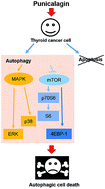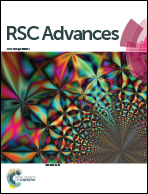Punicalagin induces apoptosis-independent autophagic cell death in human papillary thyroid carcinoma BCPAP cells
Abstract
Thyroid cancer is the most common endocrine carcinoma with increased incidence worldwide. Punicalagin is a tannin in pomegranate and contributes to a variety of physiological and pathological processes including inflammation, immunity and cancer. However, the exact role of punicalagin played in thyroid cancer treatment has not been elucidated yet. Our study shows that punicalagin decreased the viability of thyroid cancer cell line BCPAP. Punicalagin treatment did not influence the nuclear fragmentation or chromatin condensation and cell cycle distribution of BCPAP cells. Besides, no caspase-3 and PARP cleavage was observed after punicalagin treatment. These characteristics integrally indicated that punicalagin initiated a non-apoptotic cell death in BCPAP cells. Autophagy is a response of cancer cells to various anticancer therapies. In the present study, punicalagin treatment resulted in marked autophagy induction as evidenced by an increase in LC3-II conversion and beclin-1 expression, and increased in p62 degradation. In addition, punicalagin-induced cell death was significantly inhibited by autophagy inhibitors 3-methyladenine. Moreover, the punicalagin activates the MAPK and inhibits the mTOR signaling pathways to promote the process of autophagy. Taken together, our results provide evidences for the antitumor effect of punicalagin which is considerably linked to its ability to induce autophagic cell death.


 Please wait while we load your content...
Please wait while we load your content...